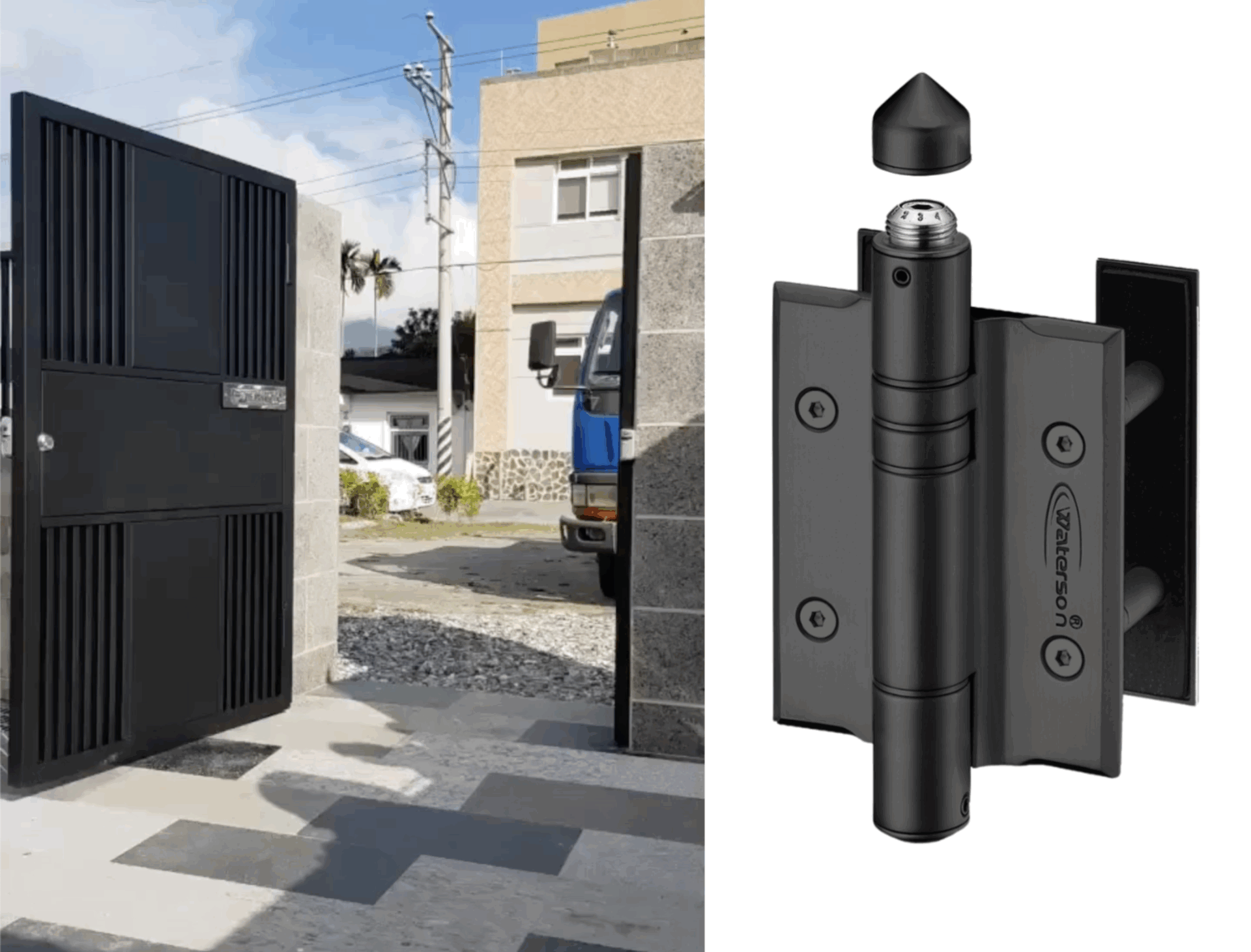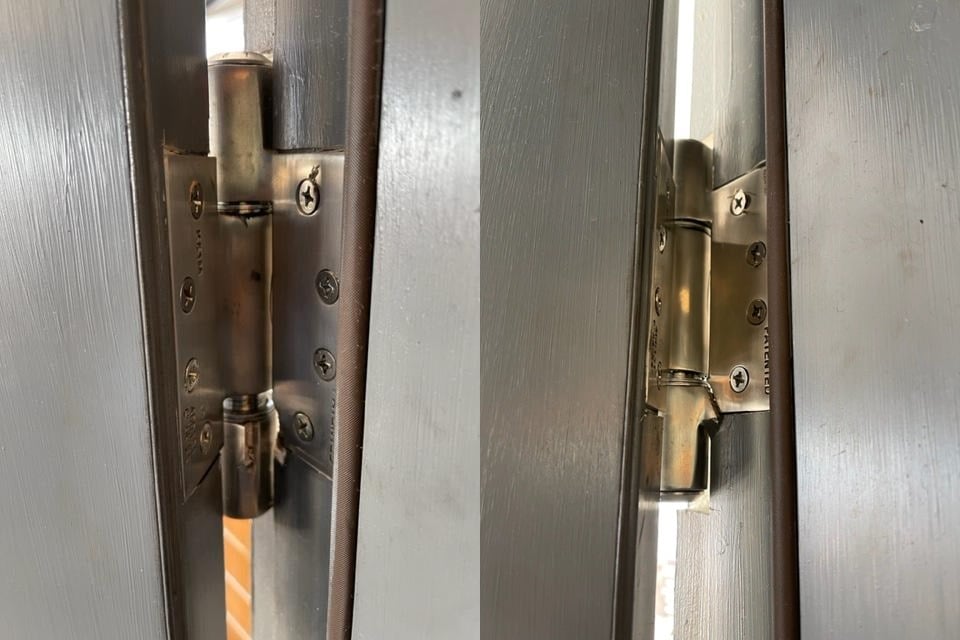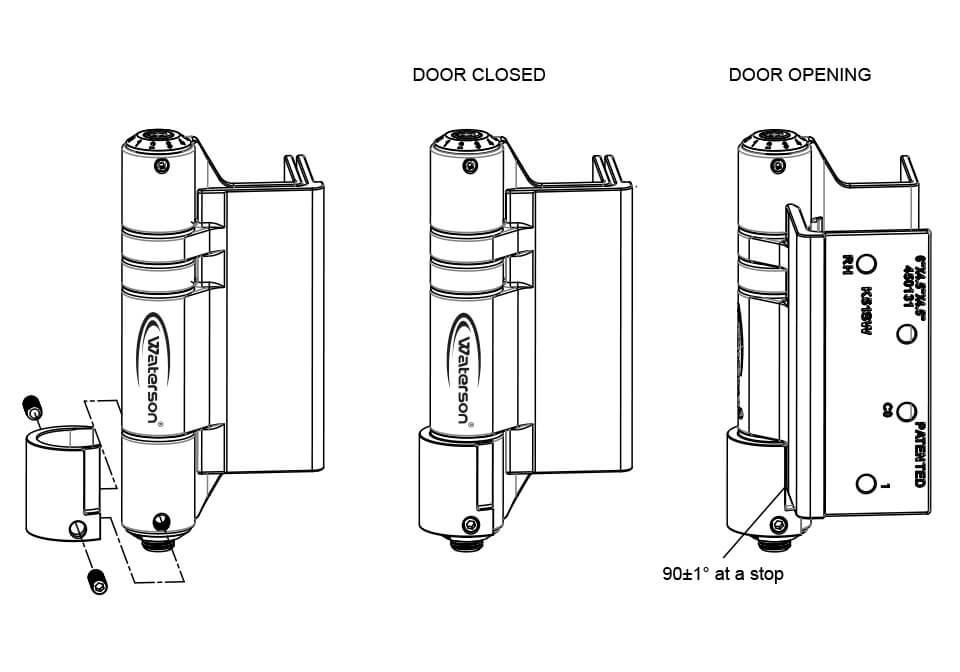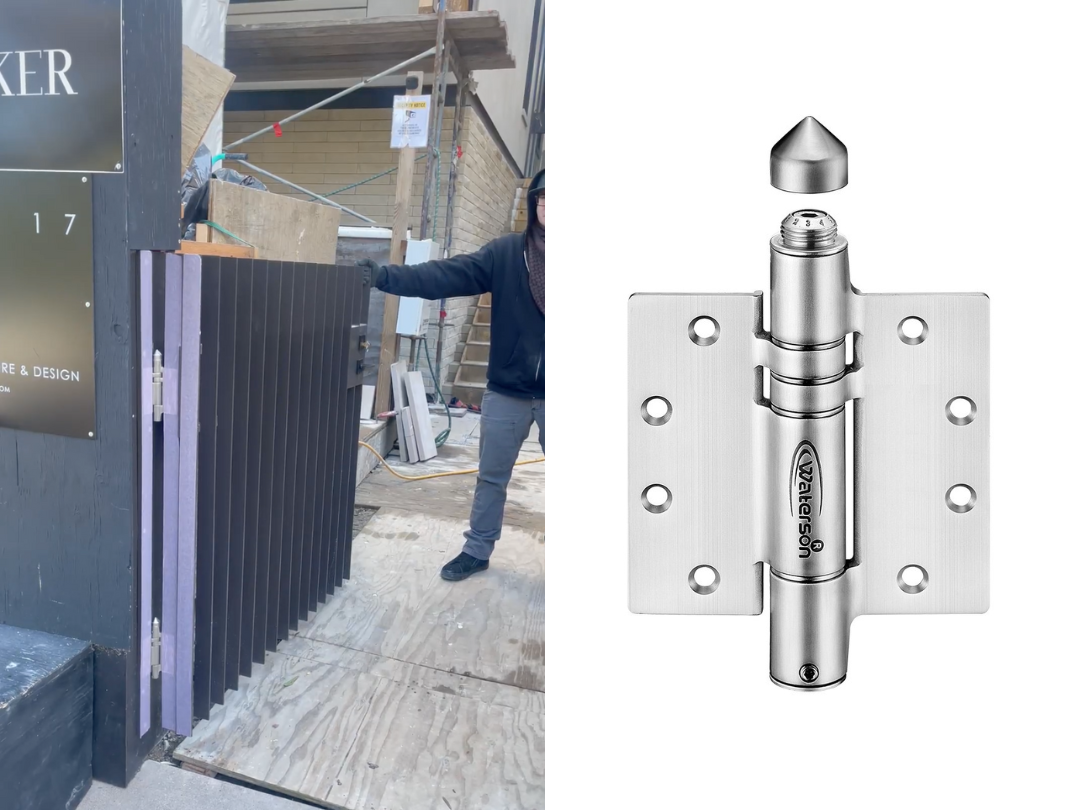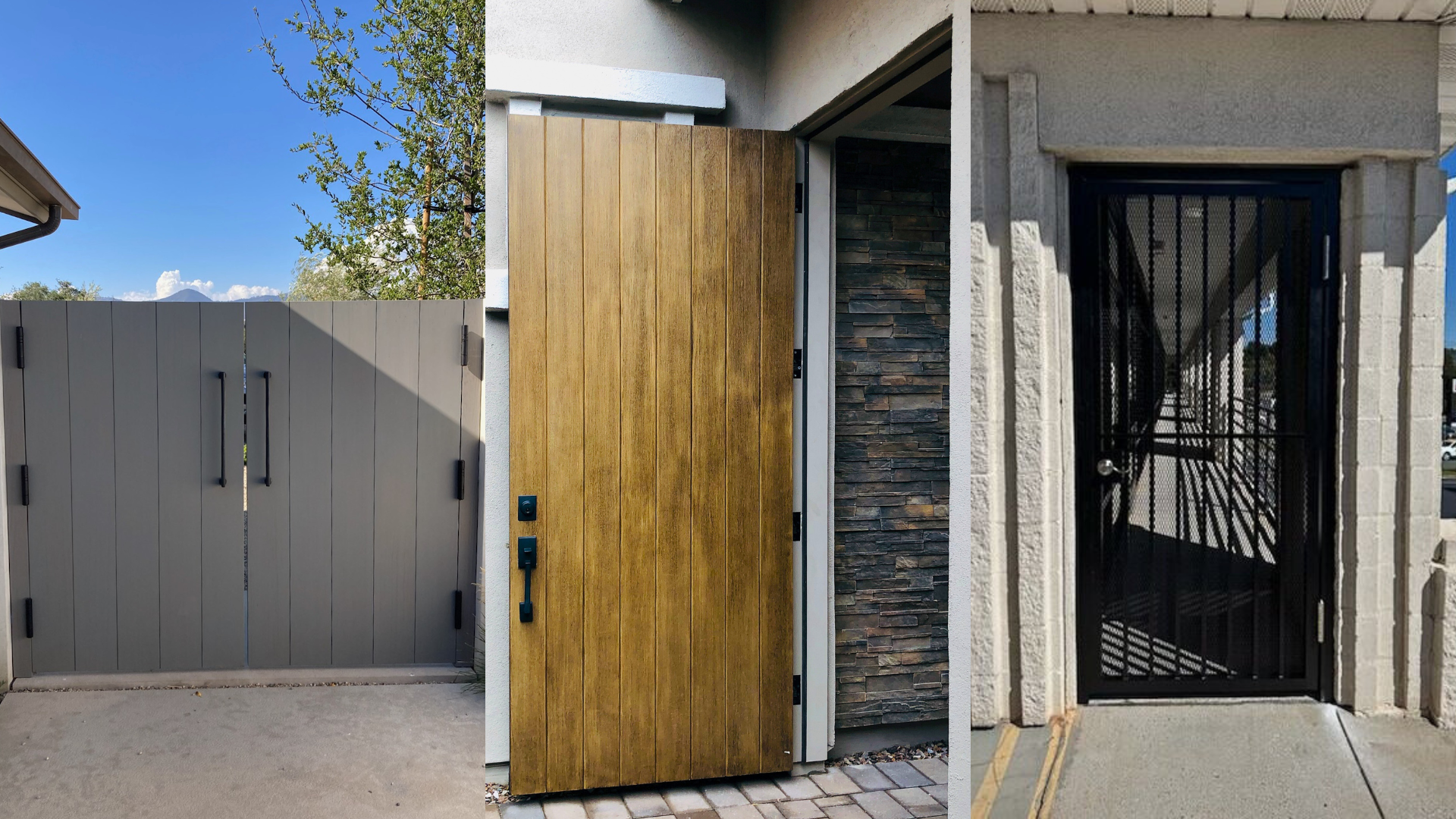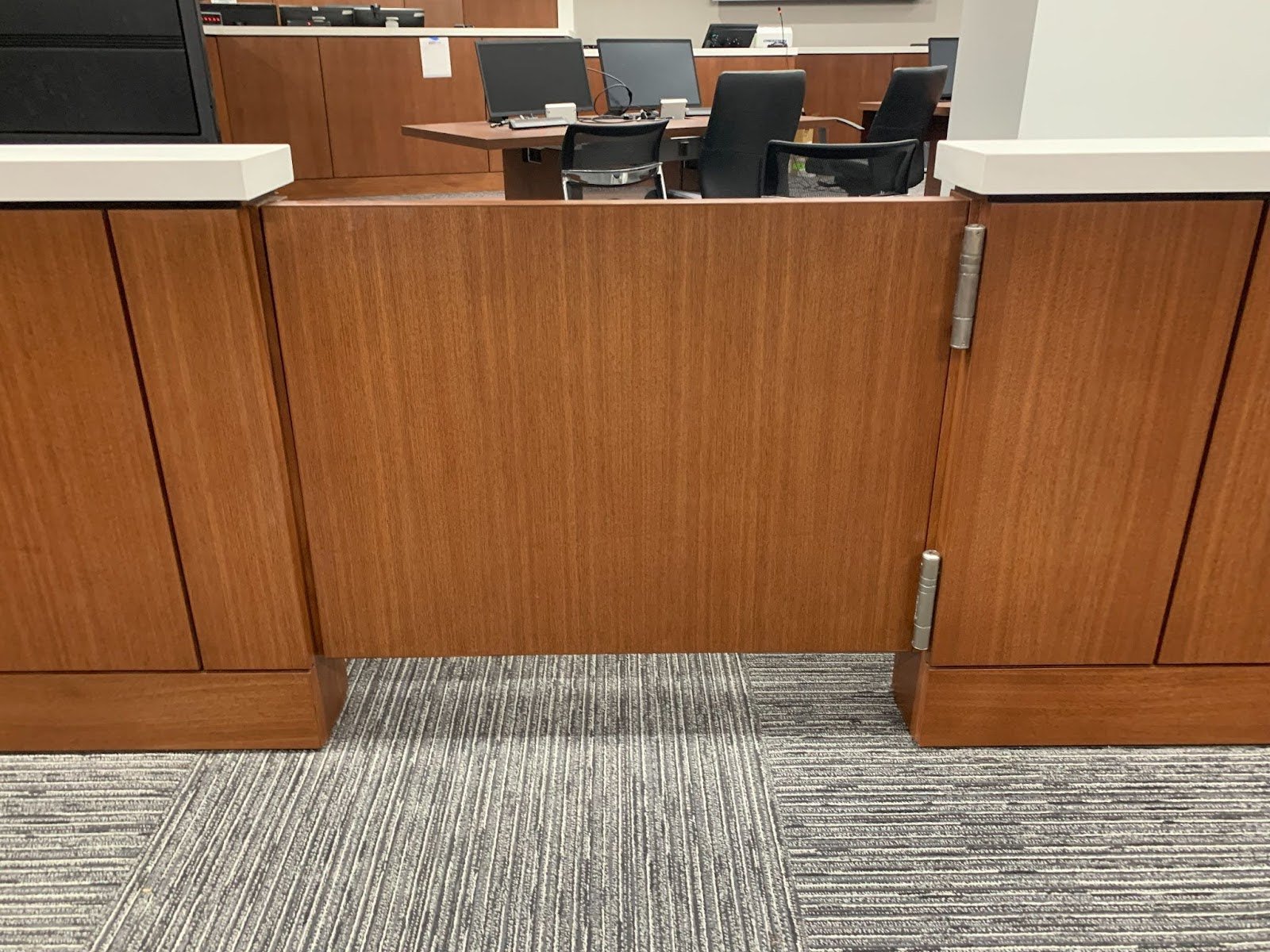“Can I use your self-closing hinges on a door that opens more than 120 degrees?”
It’s a question we’ve heard often. In architectural hardware, the door opening angle is more than a measurement. It directly impacts spring tension, alignment integrity, and long-term performance. Waterson’s self-closing mechanism is speed-controlled and tension-balanced specifically within the 0–120° operating range. This is where the spring, alignment, and closing force remain consistent, predictable, and stable under daily use.
So why is 120-degree angle, and what happens if you push beyond it? Let’s break it down.
Understanding Waterson Hinge’s 120 Degree Door Opening Angle
Waterson self-closing hinges are engineered to perform at their highest reliability within the 0–120°.
This range isn’t a restriction—it’s where the spring system delivers:
- optimal tension
- stable alignment
- consistent, predictable self-closing
- controlled movement for both ADA and everyday operation
Depending on installation and site clearances, the hinge may physically open a bit beyond 120°, but that angle no longer supports the calibrated force balance the hinge is designed to maintain. Staying within the intended range ensures the hinge continues delivering the smooth, controlled performance Waterson hinges are known for.
What Happens If You Go Beyond 120 Degree
“Can the Waterson hinge open beyond 120 degrees?”
Technically—yes. Waterson self closing spring hinge can open slightly beyond that. But we do not recommend it for frequent use because:
- Mechanical hinges: Hinges won’t break, but the door will slam because there is no speed/latch control in that range.
- Hydraulic hinges: Repeated use beyond 120° will slowly damage the internal system.
Although Waterson hinge can physically swing farther in some cases, it’s not designed to sustain that added load long-term. That’s a performance compromise we advise against.
How to Stop an Exterior Door from Swinging Open
If your project requires controlling the swing range, particularly to avoid wall impact or maintain code clearance, there’s a reliable solution available.
Waterson offers a door stopper, an optional add-on that mounts directly onto the hinge barrel. It’s engineered to prevent the door from swinging beyond a preset angle. Many clients use it to maintain the 90-degree or 120-degree door opening angle without relying on external floor or wall stops.
Door Opening Angle Is a Design Variable — Not an Afterthought
Hardware often gets selected late in the process. But the door opening angle should be part of your decision matrix from the beginning.
If your goal is long-term durability, compliance, and functional control, you need to consider:
- Hinge opening limits
- Installation clearance
- Accessory integration (like stoppers)
- And how often the door will be used or overextended
That’s the kind of upstream thinking that prevents downstream maintenance calls.
Waterson Heavy Duty Swing-Controlled Spring Hinges
Waterson heavy duty spring hinges combine the function of an overhead closer and a hinge into a single, sleek component—complete with optional hold-open and door-stop features. Designed for commercial openings, gates, and glass doors, these hinges are easy to install and adjust to meet ADA and ICC A117.1 standards for opening force, while ensuring quiet and secure closure. Crafted from durable stainless steel, they are NFPA 80 compliant, UL 3-hour fire-rated, and built to perform reliably in both interior and all-weather exterior environments. See all our features.
In addition to these performance advantages, Waterson offers flexible customization services. As a direct manufacturer, we can tailor hinge sizes, finishes, and especially hinge leaf designs to meet the specific structural needs of your doors. This makes our hinges an ideal solution for door manufacturers seeking custom options that integrate seamlessly with their existing frames.
Request For Information
Please note that Waterson Closer Hinges start from a size of 4″x4″. If you’re in need of smaller self-closing hinges, we’d recommend checking out some other resources! Also, we only provide single acting closer hinges. Thank you.
Recent Post
Cold Weather Gate Hinges: How Waterson Performs in Winter
When winter comes, temperatures drop—and outdoor fence gates start to behave differently. Wood absorbs moisture and swells, metal contracts slightly, and hardware components shift under [...]
Typical Problems of Entry Door Hinges: How Can I Fix Them?
Usually, it doesn’t start with a falling entry door—it just starts to feel off. Sometimes it begins to creak when opening. It doesn’t line up [...]
6ft Tall Door Hinges Under Closer Height Limits
Recently, a customer just shared with us the reason why she chose spring loaded door hinges instead of a door closer on her project: “Just [...]

